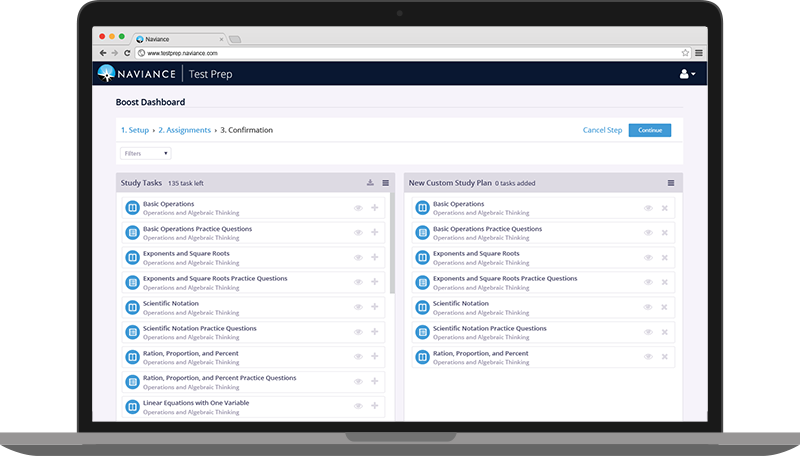Blended Learning Benefits, Strategies, and Tips for Implementation
Blended learning, also known as hybrid learning, has been around for years, but the COVID-19 pandemic brought it to the forefront of conversation as organizations had to quickly adapt to the new learning landscape. And while this shift was forced upon some organizations, blended learning can be extremely beneficial for busy, professional learners—when implemented and executed correctly.
A blended learning model combines in-person teaching with technology-driven virtual learning approaches to deliver the best of both worlds. Instructors and learners can both benefit from improved efficiencies through blended learning to accomplish learner and program objectives. In this blog, we'll look at the advantages of offering blended learning, tips for creating and implementing a blended learning model into your learning and certification training program, and how one sales training organization successfully launched a blended learning program.
Advantages of Blended Learning for Professional Learners
Flexibility and Accessibility
In-person courses have limitations for many learners, and quite often are inaccessible. If there's no course available in a convenient location, it may deter some from enrolling if it requires time or costs that someone doesn't want or cannot cover. A course that is blended, opens it up to more people. If a learner is only required to attend in-person classes occasionally, they may be more inclined to enroll.
The flexibility that blended learning courses offer can increase the amount of time someone has to learn. The digital component of a blended learning course should offer microlearning opportunities, meaning a learner can squeeze learning into early mornings or late evenings, their lunch break, or even their work commute. Digital learning is much easier to for busy professionals to fit in around their schedules than traditional evening or weekend classes.
More Engaged Learners
According to Education and Information Technologies, when compared to traditional learning, 73 percent of educators believe blended learning has improved engagement. Blended learning gives learners a variety of digital tools and resources to not only gain knowledge but truly retain information and obtain mastery (which is imperative when studying for a high-stakes certification exam, for example).
The digital component provides an engaging learning experience by incorporating gamification, personalized learning pathways, interactive content, social learning, self-assessment opportunities, and more. However, because learners will still have the opportunity to attend classes, they will also reap the benefits that come with an in-person environment such as building relationships with teachers and peers, group discussions, and practicing skills with peers to develop confidence.
Decreased Costs and Boosted Revenue
There are many costs associated with in-person, traditional classroom courses, including expenses for travel, transportation, lodging, and meals. On top of that, there are costs associated with the course itself, such as printed materials and the physical space where the course will take place. Organizations can cut costs by using a blended learning model for a company’s corporate training. Lastly, as we mentioned earlier, in-person courses limit the number of learners that can enroll. A blended learning model opens up the course to more people, leading to more revenue.
Cater to Different Learning Styles
Different people have different preferences with it comes to learning. Blended learning takes every type of learner into account, whether they prefer a traditional classroom environment, would rather learn online, or like a mixture of both. Without the limitations of a purely in-person classroom or all-online course, blended learning utilizes a variety of methodologies so the course and content can be catered to these varied preferences.
Tips for Creating and Implementing a Blended Learning Model
Design a Balanced Approach
Developing an appropriate combination of learning methods can be complex. Knowing how, when, and most importantly why, digital components should be introduced into a non-digital curriculum will ultimately yield the most effective and efficient recipe for the learner experience.
Digital resources such as webinars, video tutorials, pre-recorded lessons, digital discussion boards, and supplemental reading and assessments should be offered to ensure learners can get the most out of a training or development program. These resources should not necessarily be used to introduce new topics to the learner for the first time or to repeat what’s already been covered in the classroom. Having them available can help aid in retention by ingraining additional examples and tutorials of certain materials, while also providing a platform for learners to revisit content that might require additional time to digest.
Let’s not forget about the on-demand convenience factor either. Developing a curriculum and study plan around these basic principles that balance classroom and supplemental digital learning tactics will ensure learners have access to content that will help them reach their full potential while following a cohesive, yet blended roadmap.
Arm Instructors with Action-oriented Analytics
The most important questions an instructor should ask themselves when developing a blended learning curriculum are, “What is the best use of face-to-face class time?” and “How can digital tactics supplement that time?” Finding a good balance between the two should guide instructors on the usefulness of digital resources to reinforce lessons, test learner knowledge, and provide added value to enhance the learner experience outside of the classroom. This information can also assist instructors in evaluating:
- Which classroom lessons are most effective
- What additional training may be needed
- Learner confidence levels on an individual or group level
- Resource and time management
Real-time performance data analytics provide instructors with unique insight to develop an outcome-driven course plan tailored directly to learner needs.
Improve the Learner Experience
Participating in live classroom courses can often feel burdensome for learners, particularly those who have demanding schedules and expectations on the job. While there is still tremendous value in traditional face-to-face learning for the introduction and transfer of complex information from an expert to a learner, supplemental digital features via blended learning offer personalized pathways for learners to engage in new and challenging study tasks to achieve their ultimate goals. Adaptive digital features tools include:
- Practice tests
- Flashcards
- Gamified activities
- Other customized learning programs
How Richardson Leaned into Learning Technology to Develop a Successful Blended Learning Program
As you know, one-size learning does not fit all. Our learning platform offers a Curriculum Feature allowing instructors to curate personalized courses and assignments for cohorts. This proprietary and adaptive tool targets each learner and supplements ILT and VILT with tangible digital assignments, content, and activities.

Richardson, one of BenchPrep’s partners, incorporated a blended learning strategy into its sales training program to drive higher engagement and results. Check out the video below to see how they leaned into technology to develop a successful training program.





